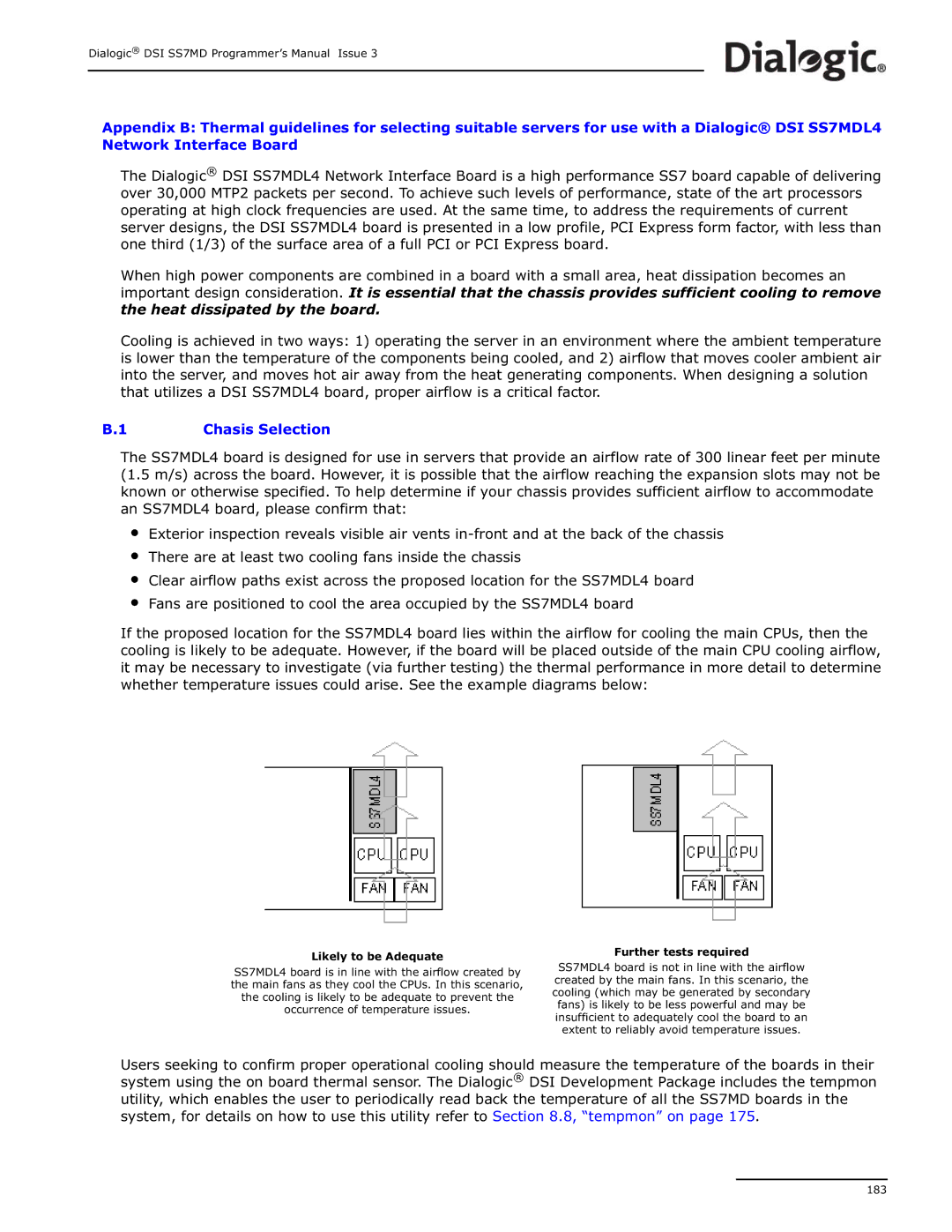
Dialogic® DSI SS7MD Programmer’s Manual Issue 3
Appendix B: Thermal guidelines for selecting suitable servers for use with a Dialogic® DSI SS7MDL4 Network Interface Board
The Dialogic® DSI SS7MDL4 Network Interface Board is a high performance SS7 board capable of delivering over 30,000 MTP2 packets per second. To achieve such levels of performance, state of the art processors operating at high clock frequencies are used. At the same time, to address the requirements of current server designs, the DSI SS7MDL4 board is presented in a low profile, PCI Express form factor, with less than one third (1/3) of the surface area of a full PCI or PCI Express board.
When high power components are combined in a board with a small area, heat dissipation becomes an important design consideration. It is essential that the chassis provides sufficient cooling to remove the heat dissipated by the board.
Cooling is achieved in two ways: 1) operating the server in an environment where the ambient temperature is lower than the temperature of the components being cooled, and 2) airflow that moves cooler ambient air into the server, and moves hot air away from the heat generating components. When designing a solution that utilizes a DSI SS7MDL4 board, proper airflow is a critical factor.
B.1 | Chasis Selection |
The SS7MDL4 board is designed for use in servers that provide an airflow rate of 300 linear feet per minute (1.5 m/s) across the board. However, it is possible that the airflow reaching the expansion slots may not be known or otherwise specified. To help determine if your chassis provides sufficient airflow to accommodate an SS7MDL4 board, please confirm that:
•
•
•
•
Exterior inspection reveals visible air vents
There are at least two cooling fans inside the chassis
Clear airflow paths exist across the proposed location for the SS7MDL4 board
Fans are positioned to cool the area occupied by the SS7MDL4 board
If the proposed location for the SS7MDL4 board lies within the airflow for cooling the main CPUs, then the cooling is likely to be adequate. However, if the board will be placed outside of the main CPU cooling airflow, it may be necessary to investigate (via further testing) the thermal performance in more detail to determine whether temperature issues could arise. See the example diagrams below:
Likely to be Adequate
SS7MDL4 board is in line with the airflow created by the main fans as they cool the CPUs. In this scenario, the cooling is likely to be adequate to prevent the occurrence of temperature issues.
Further tests required
SS7MDL4 board is not in line with the airflow created by the main fans. In this scenario, the cooling (which may be generated by secondary fans) is likely to be less powerful and may be insufficient to adequately cool the board to an
extent to reliably avoid temperature issues.
Users seeking to confirm proper operational cooling should measure the temperature of the boards in their system using the on board thermal sensor. The Dialogic® DSI Development Package includes the tempmon utility, which enables the user to periodically read back the temperature of all the SS7MD boards in the system, for details on how to use this utility refer to Section 8.8, “tempmon” on page 175.
183
